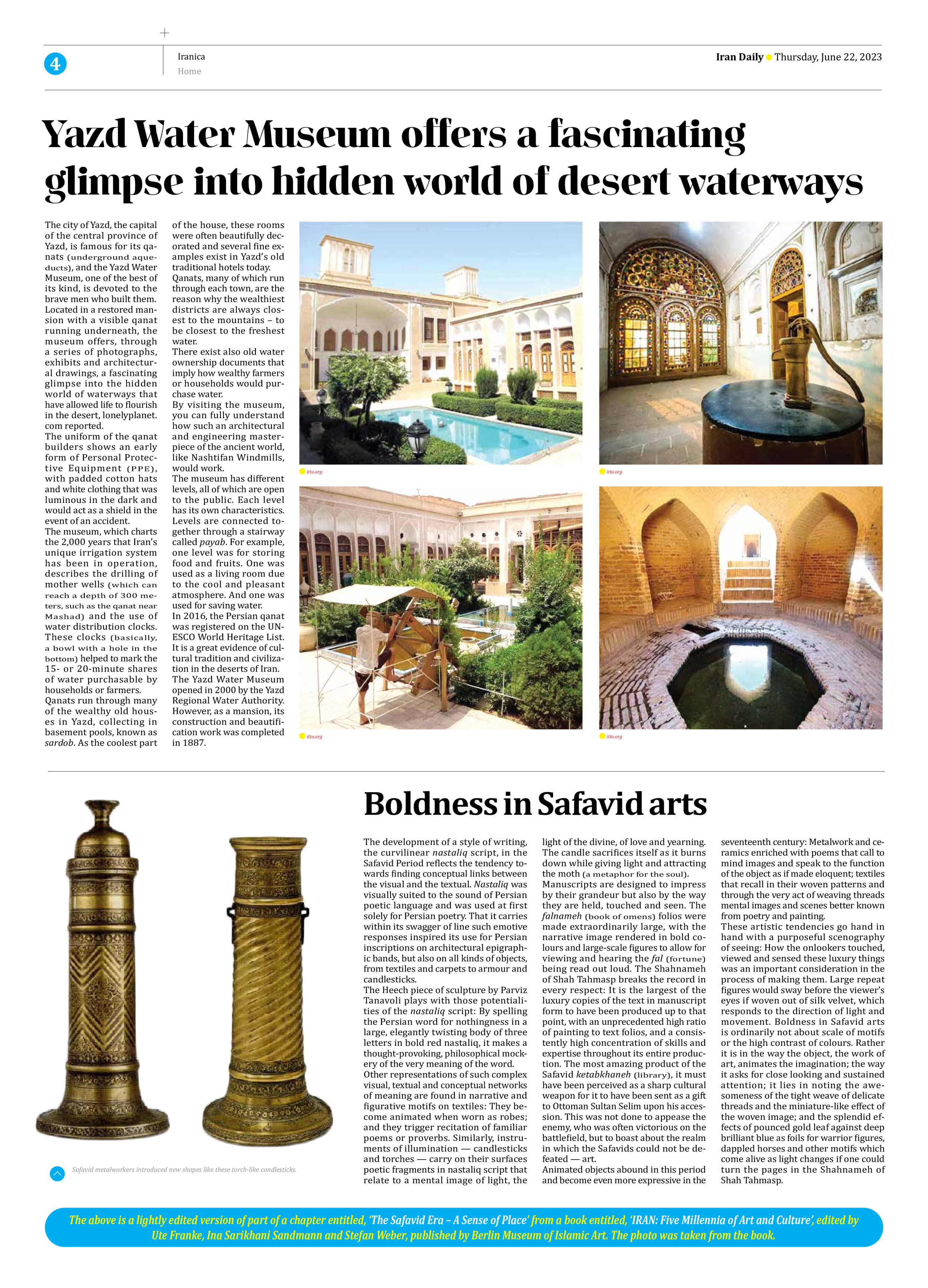
Yazd Water Museum offers a fascinating glimpse into hidden world of desert waterways
The city of Yazd, the capital of the central province of Yazd, is famous for its qanats (underground aqueducts), and the Yazd Water Museum, one of the best of its kind, is devoted to the brave men who built them.
Located in a restored mansion with a visible qanat running underneath, the museum offers, through a series of photographs, exhibits and architectural drawings, a fascinating glimpse into the hidden world of waterways that have allowed life to flourish in the desert, lonelyplanet.com reported.
The uniform of the qanat builders shows an early form of Personal Protective Equipment (PPE), with padded cotton hats and white clothing that was luminous in the dark and would act as a shield in the event of an accident.
The museum, which charts the 2,000 years that Iran’s unique irrigation system has been in operation, describes the drilling of mother wells (which can reach a depth of 300 meters, such as the qanat near Mashad) and the use of water distribution clocks. These clocks (basically, a bowl with a hole in the bottom) helped to mark the 15- or 20-minute shares of water purchasable by households or farmers.
Qanats run through many of the wealthy old houses in Yazd, collecting in basement pools, known as sardob. As the coolest part of the house, these rooms were often beautifully decorated and several fine examples exist in Yazd’s old traditional hotels today.
Qanats, many of which run through each town, are the reason why the wealthiest districts are always closest to the mountains – to be closest to the freshest water.
There exist also old water ownership documents that imply how wealthy farmers or households would purchase water.
By visiting the museum, you can fully understand how such an architectural and engineering masterpiece of the ancient world, like Nashtifan Windmills, would work.
The museum has different levels, all of which are open to the public. Each level has its own characteristics. Levels are connected together through a stairway called payab. For example, one level was for storing food and fruits. One was used as a living room due to the cool and pleasant atmosphere. And one was used for saving water.
In 2016, the Persian qanat was registered on the UNESCO World Heritage List. It is a great evidence of cultural tradition and civilization in the deserts of Iran.
The Yazd Water Museum opened in 2000 by the Yazd Regional Water Authority. However, as a mansion, its construction and beautification work was completed in 1887.







